Questões de Língua Inglesa do ano 2010
Lista completa de Questões de Língua Inglesa do ano 2010 para resolução totalmente grátis. Selecione os assuntos no filtro de questões e comece a resolver exercícios.
The phrases "...will likely rise..." (line 15) and "...a major redistribution of the population." (line 33) can be correctly translated as
- A.
é possível que aumente /– a maior redistribuição populacional.
- B.
é certo que subirá /– a principal redistribuição demográfica.
- C.
provavelmente aumentará –/ uma grande redistribuição da população.
- D.
vai indubitavelmente crescer /– a máxima redistribuição popular.
- E.
com certeza se expandirá /– uma significativa nova distribuição habitacional.
"Thus, whereas in 1950, 30 per cent of the world population lived in urban areas, by 2000 the proportion of urban dwellers had risen to 47 per cent and is expected to reach 60 per cent by 2030." (lines 33-37). The only sequence that offers suitable translations into Portuguese of the words in boldface in the sentence above is
- A.
Por conseguinte -– enquanto -– moradores das cidades–- deve alcançar.
- B.
Dessa forma -– visto que – migrantes urbanos -–espera-se que - chegue a.
- C.
Entretanto -– considerando que -– habitantes das cidades –- tem-se a expectativa de que supere.
- D.
Assim -– à medida- que – residentes - citadinos -–espera-se atingir.
- E.
Portanto -– se – proprietários urbanos -– deve- suplantar.
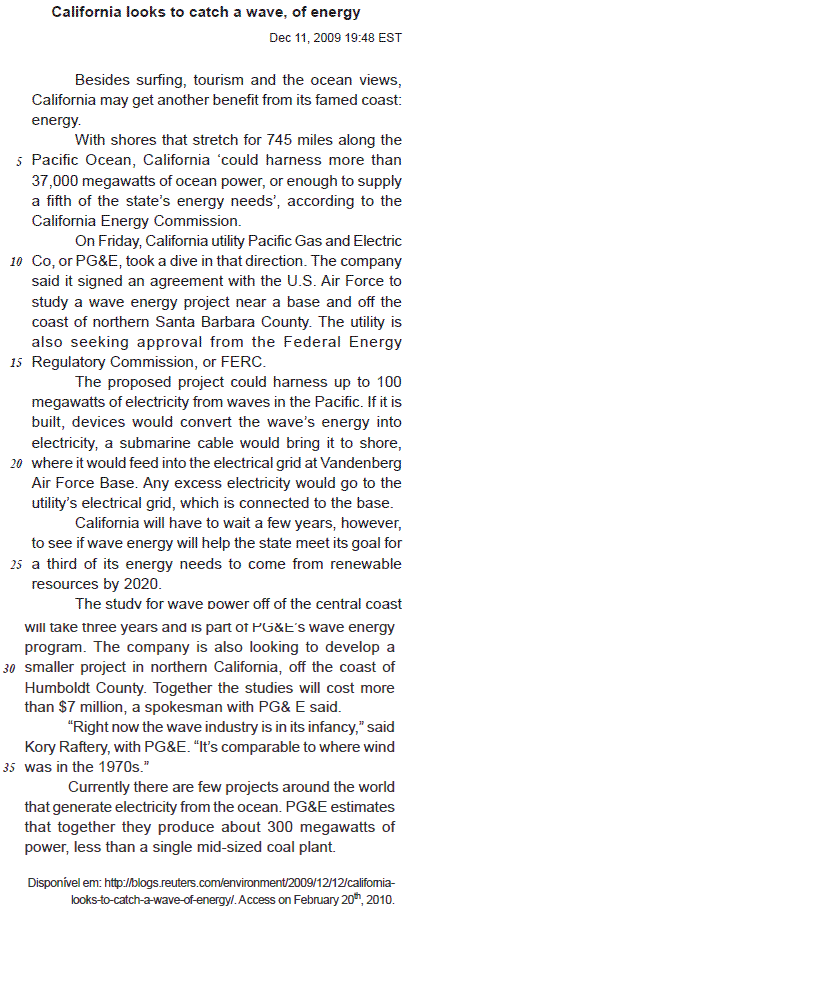
The main purpose of Text 1 is to
- A.
convince the reader that the electricity generated from the Pacific ocean will help increase tourism.
- B.
examine the several obstacles that prevent the development of the wave industry in California.
- C.
criticize the programs on wave energy that will require large investments to be implemented.
- D.
announce a new source of renewable energy that may help supply future power needs in California.
- E.
discuss the importance of the American Airforce energy program for power supply in Santa Barbara.
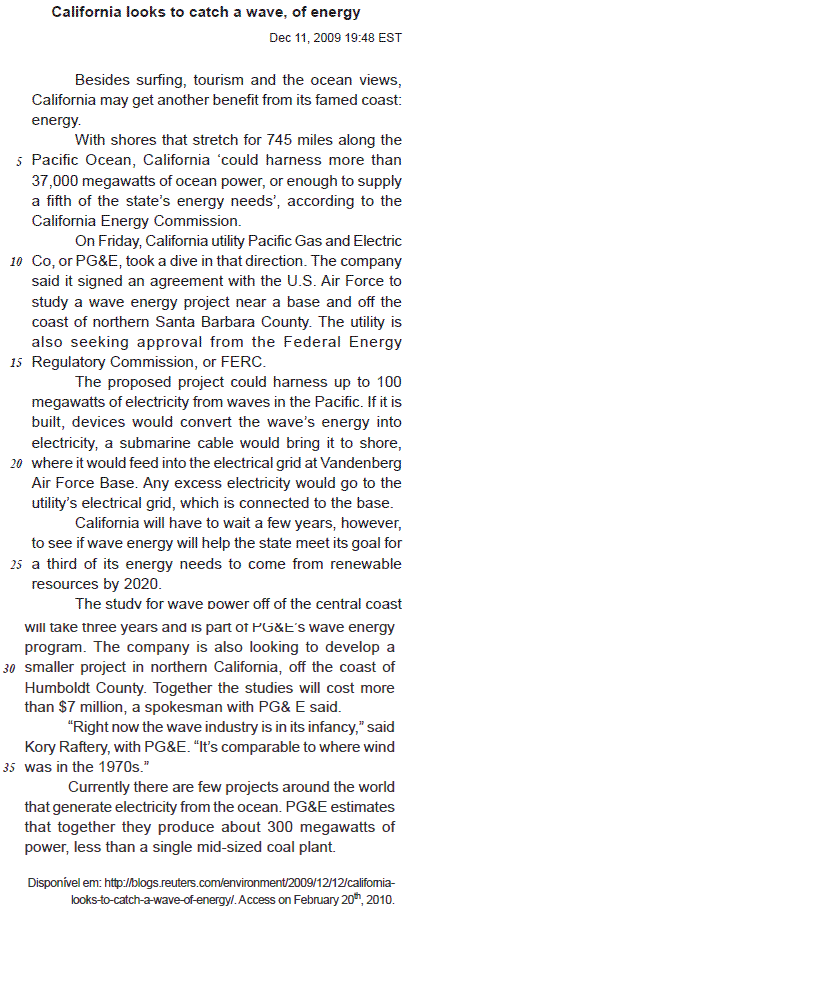
According to Text 1, PG&E
- A.
has studied the generation of energy from tides for several years.
- B.
is responsible for the supply of most of Californias energy needs.
- C.
will conduct expensive studies to investigate the power generated from waves.
- D.
has developed a wave energy program to replace the wind energy projects of the past.
- E.
has been successful in generating 100 megawatts of electricity from waves in California.
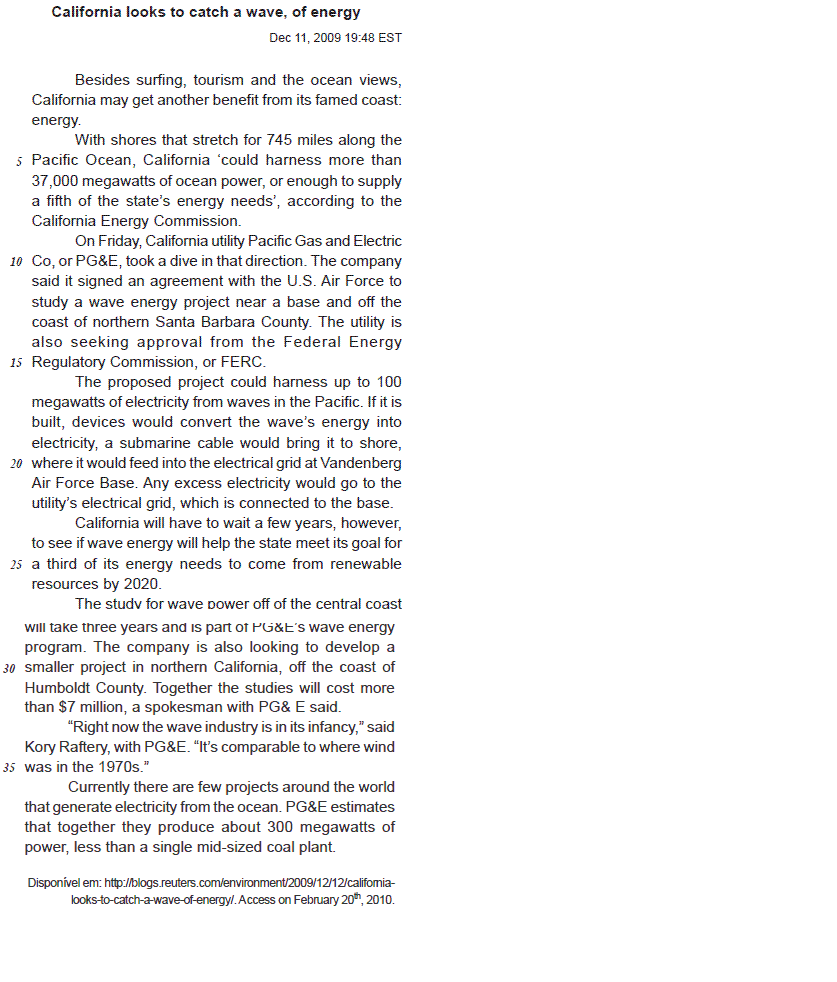
Analyzing the numerical figures in Text 1,
- A.
745 miles (line 4) refers to the total extension of the California coast.
- B.
more than 37,000 megawatts (lines 5-6) refers to the power already generated by California waves.
- C.
2020. (line 26) refers to year when wave energy alone will supply most of Californias energy needs.
- D.
more than $7 million, (lines 31-32) refers to the final cost of global studies on wave power.
- E.
1970s. (line 35) refers to the decade when the use of wind energy reached its peak.
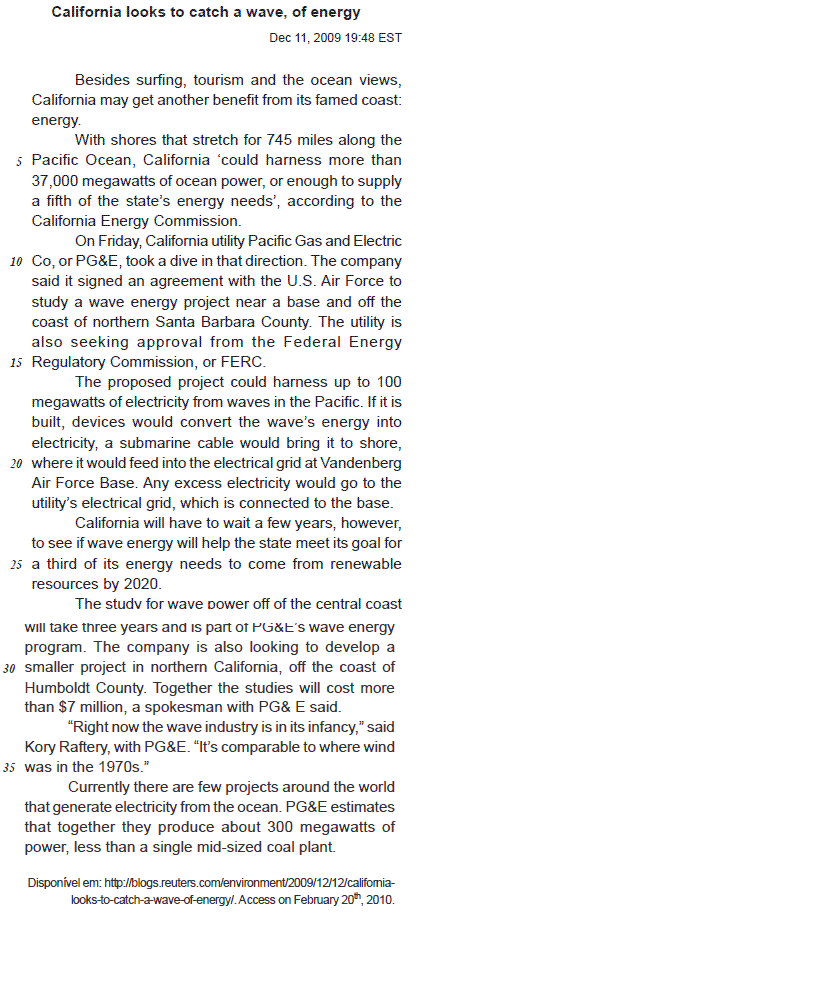
Based on the meanings of the words taken from Text 1, the relationship in each pair is defined as
- A.
benefit (line 2) and advantage are antonyms.
- B.
famed (line 2) and well-known are synonyms.
- C.
convert (line18) and transform have opposite meanings.
- D.
infancy (line 33) and beginning express contradictory ideas.
- E.
generate (line 37) and consume express similar ideas.

The expression in boldtype expresses an addition in
- A.
Besides surfing, tourism and the ocean views, California may get another benefit from its famed coast: energy. (lines 1-3)
- B.
If it is built, devices would convert the waves energy into electricity, (lines 17-19)
- C.
California will have to wait a few years, however, to see if wave energy will help the state meet its goal for a third of its energy needs (lines 23-25)
- D.
Currently there are few projects around the world that generate electricity from the ocean. (lines 36-37)
- E.
PG&E estimates that together they produce about 300 megawatts of power, less than a single mid-sized coal plant. (lines 37-39)

According to Text 2, wave-power is, at present,
- A.
a cost-effective form of generating energy.
- B.
cheaper than wind power but more efficient.
- C.
a renewable form of energy only for beach houses.
- D.
at a developmental stage and commercially unviable.
- E.
the only possible alternative energy source for Portugal.
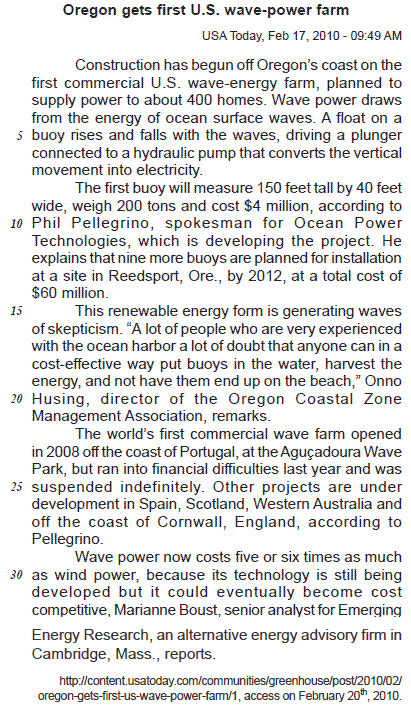
Onno Husing states that
- A.
many people mistrust the effectiveness of current wave energy technology.
- B.
energy specialists are skeptic about the future of all renewable energy sources.
- C.
the buoys set on the ocean to generate energy will certainly not remain in place.
- D.
wave energy is not going to be a successful energetic alternative for oil and gas.
- E.
any one can make a profitable and long-lasting use of waves to generate energy.
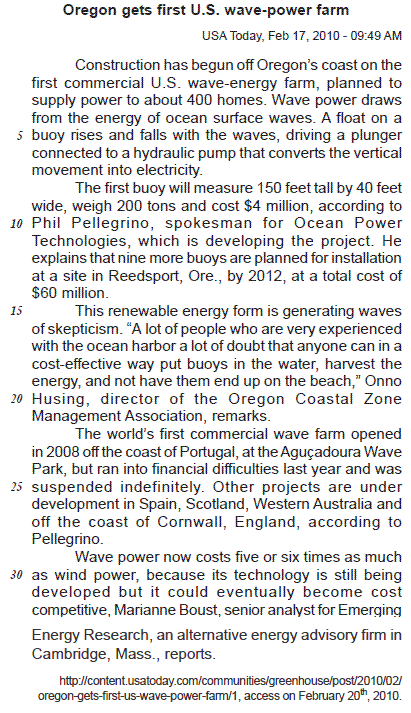
In the sentence A lot of people who are very experienced with the ocean harbor a lot of doubt that anyone can in a cost-effective way put buoys in the water, (lines 16-18), the word harbor is used in the same meaning as in
- A.
The ships arrived in the harbor more than a day late.
- B.
The diplomats had to find ways to harbor the political refugees.
- C.
These rivers harbor different species of fish, such as trout and bass.
- D.
They wanted to harbor the fugitives who streamed across the borders.
- E.
She decided not to harbor resentment against the man who accused her.


